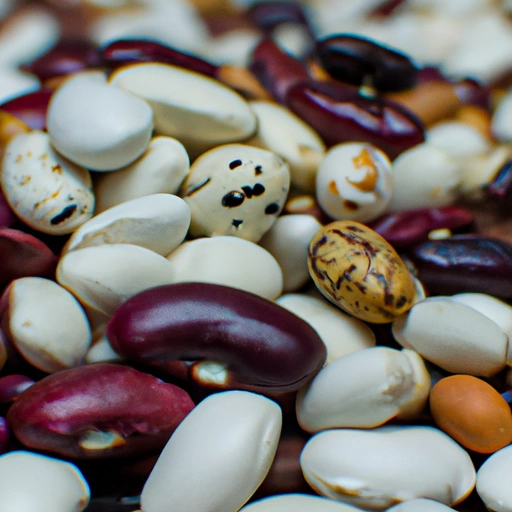Dried Beans
Description

Dried beans are a staple food ingredient renowned for their versatility and nutritional value. Dried beans, also known as legumes or pulses, are the mature forms of leguminous crops that are harvested and dried. They come in a variety of shapes, sizes, and colors, and must be soaked and cooked before consumption. Dried beans are a beloved ingredient in numerous cuisines worldwide and are known for their ability to absorb flavors, making them a fantastic addition to an array of dishes.
Common uses
Dried beans are commonly used in soups, stews, salads, and as a protein-rich meat substitute. They're also a primary ingredient in many traditional dishes such as chili, hummus, and various types of bean patties or burgers.
Nutritional value
Calories
A typical serving of cooked dried beans (about 1/2 cup or 86 grams) contains approximately 114 calories (477 kJ).
Protein
That same serving size offers about 7.6 grams of protein, making it a significant source of plant-based protein.
Fat
Dried beans are low in fat, with a 1/2 cup serving containing just 0.5 grams of fat.
Carbohydrates
Carbohydrates are abundant in dried beans, with a serving providing 20.5 grams, which includes dietary fiber essential for digestive health.
Vitamins
Beans are a good source of B vitamins, particularly folate, with a serving providing 128 micrograms or about one-third of the recommended daily intake.
Minerals
They are also rich in essential minerals such as iron, with 1.8 mg per serving, and magnesium, with 39 mg per serving.
Health benefits
Dried beans offer numerous health benefits, including aiding in weight management due to their high fiber content, improving cholesterol levels, supporting heart health, and providing a sustained energy source due to their low glycemic index.
Potential risks
Some individuals may experience digestive discomfort from beans due to their high fiber and complex sugar content. Additionally, improper preparation can lead to the ingestion of lectins, which can be harmful in high amounts.
Common recipes
Popular recipes include three-bean salad, black bean soup, refried beans, and Boston baked beans. In international dishes, dried beans are used in Indian dal, Middle Eastern falafel, and Italian pasta e fagioli.
Cooking methods
Beans are typically soaked and then boiled, stewed, or baked. Pressure cooking and slow cooking are also common methods for preparing dried beans.
Pairing with other ingredients
Beans pair well with grains such as rice or quinoa, vegetables like onions and peppers, and seasonings including cumin, garlic, and chili powder.
Summary
Dried beans are a nutritious and economical food ingredient that serve as a cornerstone in many traditional and contemporary dishes worldwide. Their high protein and fiber content, along with a host of vitamins and minerals, make them an excellent choice for health-conscious individuals. While they require some preparation before cooking, their versatility and delicious flavor profile have secured their place in the pantries of cooks from all corners of the globe.